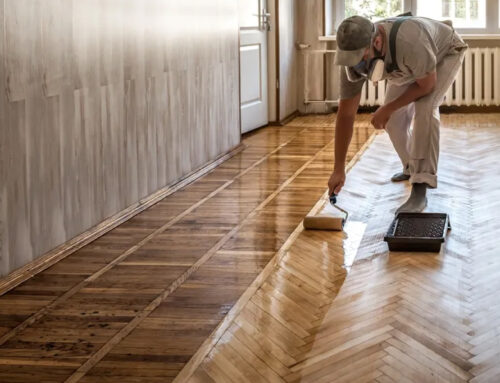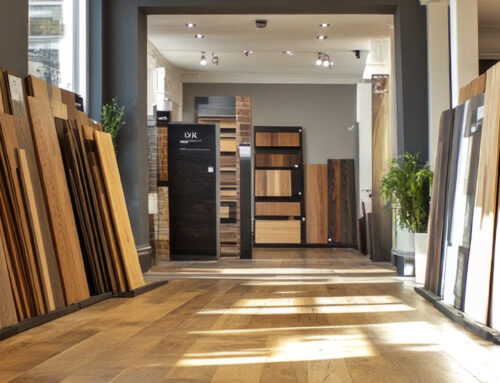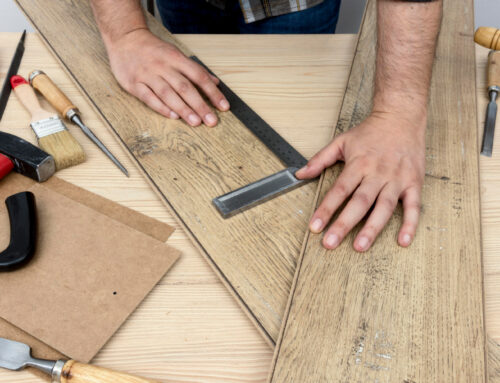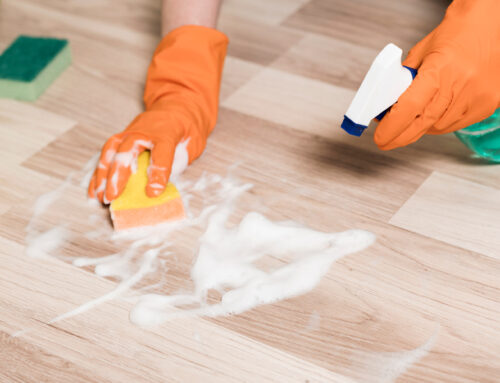For high-traffic areas, select engineered hardwood with at least a 3mm wear layer (4–6mm preferred). Hardwoods like hickory, white oak, and maple resist dents and scratches. Matte or low-gloss aluminum oxide finishes hide wear better. Proper installation and routine maintenance can help floors last for decades in demanding spaces.
Hallways echo with footsteps, kitchens bustle with daily activity, and entryways welcome countless visitors. These high-traffic zones demand flooring that withstands constant use without losing its charm. Best engineered hardwood options deliver authentic wood beauty with superior durability that outperforms traditional solid hardwood in demanding spaces. Smart property owners choose engineered solutions that handle heavy foot traffic, active families, and busy commercial environments while maintaining an elegant appearance. The right engineered hardwood transforms challenging spaces into stunning, long-lasting installations that perform beautifully for decades.
Explore Rustic Wood Floor Supply’s premium engineered hardwood collections designed specifically for demanding commercial and residential applications with guaranteed durability ratings.
What Makes Engineered Hardwood Suitable For Busy Areas?
Engineered hardwood excels in demanding environments because of its layered construction, which provides superior stability and moisture resistance compared to solid wood. The multi-layer design prevents warping while the real wood veneer maintains an authentic hardwood appearance and performance.
Did You Know?
According to industry data, engineered hardwood represents approximately 52% of the U.S. wood flooring market, with many products offering warranties of 15 to 35 years.
1. Thickness of the Wear Layer
The wear layer represents the actual hardwood veneer on top of engineered flooring. This layer determines refinishing potential and directly impacts longevity in demanding environments.
Recommended thickness by application:
- 3mm wear layer: Light commercial and residential use
- 4mm wear layer: Moderate to heavy residential traffic
- 5-6mm wear layer: Heavy commercial and extreme residential use
Floors with wear layers of 4mm or more can typically be sanded and refinished 2–3 times, depending on manufacturer specifications.
2. Wood Species Selection
Species hardness, measured by the Janka scale, indicates resistance to dents, scratches, and general wear patterns.
Top species for demanding environments:
- Hickory: 1,820 lbf → Maximum dent resistance for extreme conditions
- Hard Maple: 1,450 lbf → Superior scratch resistance with light coloring
- White Oak: 1,360 lbf → Excellent balance of hardness and classic appearance
- Red Oak: 1,290 lbf → Traditional choice with good wear resistance
Maple takes stains well, allowing design flexibility without sacrificing durability. Hickory, maple, and oak outperform softer species like pine or cherry in high-traffic areas due to higher Janka hardness and dent resistance.
3. Finish Types and Protection
Surface finish determines how well engineered hardwood handles daily wear while maintaining its appearance.
Aluminum oxide finishes create a very hard surface using microscopic particles, offering superior resistance to scratches and stains compared with standard polyurethane coatings.
UV-cured oil finishes soak into wood fibers, providing strong, long-lasting protection while keeping the natural texture of the wood and allowing spot repairs
Finish characteristics:
- Matte finish: Hides imperfections better than gloss
- Low-gloss: Balances durability with elegant appearance
- Commercial-grade: 3-4 coats applied in controlled facilities
4. Core Construction Quality
The core layer provides structural stability in varying conditions. High-quality plywood cores offer superior dimensional stability compared to particle board or fiberboard alternatives.
Key construction features:
- Multi-layer plywood: Alternating grain directions prevent warping
- Cross-grain layering: Increases structural integrity
- Moisture-resistant adhesives, such as PVA or polyurethane, prevent delamination
This stability is essential for preventing warping, splitting, or delamination in areas with frequent temperature and humidity changes.
5. Brand Recommendations
Leading engineered hardwood manufacturers focus on construction quality, durability testing, and comprehensive warranties for demanding applications. Consider these established brands when selecting flooring for busy areas:
- Cordalera Lakes offers engineered options with thick wear layers and advanced finishing systems. Their products undergo rigorous testing to ensure performance in demanding commercial and residential environments
- Urban Floor combines modern aesthetics with performance engineering, creating products that maintain their appearance under heavy use. Their finish systems specifically address wear patterns common in busy areas.
- Naturale Elegance brings European manufacturing standards to engineered hardwood, focusing on precision construction and long-term performance in challenging conditions.
- Wickham specializes in products tested for extreme temperature variations and heavy use, making them suitable for demanding climates and applications.
6. Installation and Maintenance Requirements
Professional installation ensures optimal performance through proper subfloor preparation, adhesive selection, and adequate acclimation time.
Essential installation steps:
- Moisture testing: Verify subfloor dryness before installation
- Surface preparation: Ensure levelness and appropriate underlayment
- Acclimation period: Allow flooring to adjust to room conditions
- Quality adhesives: Use moisture-resistant bonding agents
Protective measures:
Place mats at all entrances and rugs in front of sinks and workstations. High-quality mats trap dirt and moisture before they contact the flooring surface.
Performance Characteristics in High-Traffic Environments
Understanding how engineered hardwood performs under constant use helps property owners make informed decisions. Real-world performance data shows significant advantages over other flooring options in demanding applications.
Durability Testing Standards
Manufacturers conduct extensive testing to validate performance claims. ASTM testing standards ensure consistent performance evaluation across products through:
- Abrasion resistance testing: Simulates long-term wear patterns
- Impact testing: Evaluates resistance to dropped objects
- Commercial-grade standards: Exceed residential requirements
Maintenance schedule for busy areas:
- Daily: Sweep or vacuum to remove abrasive particles
- Weekly: Deep clean with manufacturer-approved products
- Monthly: Inspect for wear patterns and potential issues
- Every 3-5 years: Professional recoating in heavy-use zones
With proper maintenance and quality products, engineered hardwood can last 20-40 years, though actual lifespan depends on traffic levels, maintenance quality, and product specifications.
Final Call
Selecting engineered hardwood for demanding areas requires careful attention to wear layer thickness, species hardness, and finish quality. Options with 4-6mm wear layers, hard species like hickory or oak, and commercial-grade finishes deliver decades of reliable performance when properly installed and maintained.
Upgrade your high-traffic spaces with premium engineered hardwood that combines beauty with unmatched durability. Rustic Wood Floor Supply specializes in commercial-grade engineered hardwood from leading manufacturers like Cordalera Lakes, Urban Floor, Naturale Elegance, and Wickham. Our extensive inventory includes thick wear layer options, premium species, and advanced finish systems designed for the most demanding applications.
Experience wholesale pricing with retail-level service for your next high-traffic project.
Start Your Project: (678) 691-0533
View Collections: https://rusticwoodfloorsupply.com/flooring-shop/
Frequently Asked Questions
What is the best thickness for engineered hardwood in high-traffic areas?
For high-traffic areas, choose engineered hardwood with a wear layer of at least 3mm. Total plank thickness of 1/2 inch or more adds stability and longevity.
Which wood species are most durable for engineered flooring in high-traffic zones?
Hickory, oak, and maple are among the most durable species for engineered hardwood, offering superior hardness and resistance to dents and scratches.
Is engineered hardwood scratch-resistant for homes with pets and kids?
Engineered hardwood with a thick wear layer and a quality finish like aluminum oxide can withstand scratches from pets and children, but regular care is still needed.
How long does engineered hardwood last in busy homes?
With proper maintenance and a quality product, engineered hardwood can last 20 to 40 years, even in high-traffic environments.
Can engineered hardwood be refinished if it gets worn down?
Yes, engineered hardwood with a thick enough wear layer can be sanded and refinished one or more times to renew its surface.
Are there waterproof engineered hardwood options suitable for kitchens or entryways?
Some engineered hardwoods are water-resistant, and a few products are advertised as waterproof, but not all engineered hardwood is suitable for wet areas.
Author Profile
- I have worked in hardwood flooring for the last 8 years. Use to run a company of residential crews as well as a company with gym flooring. If you need floor installation or refinishing help, I should have an answer or at least get you in the right direction.
Latest entries
 FlooringDecember 10, 2025Wood Floor Restoration in Atlanta: What Affects the Cost
FlooringDecember 10, 2025Wood Floor Restoration in Atlanta: What Affects the Cost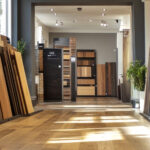 FlooringDecember 8, 2025Top 6 Wholesale Hardwood Flooring Solutions for Your Home & Office – Boise, ID
FlooringDecember 8, 2025Top 6 Wholesale Hardwood Flooring Solutions for Your Home & Office – Boise, ID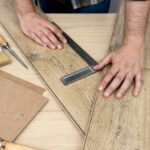 FlooringNovember 25, 2025What Engineered Hardwood Flooring Will Last Longest?
FlooringNovember 25, 2025What Engineered Hardwood Flooring Will Last Longest? FlooringNovember 22, 2025Best Wood Floor Cleaner Liquid for Hardwood Flooring
FlooringNovember 22, 2025Best Wood Floor Cleaner Liquid for Hardwood Flooring

